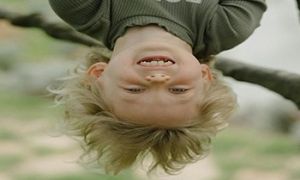The Importance For Young Children To Learn About Insects
- Exploration and Discovery: Observing insects encourages children to ask questions and make discoveries about the natural world. This fosters a sense of curiosity and a love for learning.
- Detail-Oriented Learning: Studying insects helps children develop their observational skills as they examine the physical characteristics and behaviors of different species.
3. Teaches Basic Biology Concepts
- Life Cycles and Habitats: Learning about insects introduces children to fundamental biology concepts such as life cycles, habitats, and the roles insects play in the ecosystem.
4. Encourages Outdoor Play and Physical Activity
- Nature Exploration: Activities like bug hunts and nature walks get children outside, promoting physical activity and a connection with nature.
5. Fosters Empathy and Environmental Responsibility
- Respect for Living Things: Teaching children about insects helps them develop empathy and respect for all living creatures, fostering a sense of environmental responsibility.
6. Dispels Fears and Misconceptions
- Positive Interactions: By learning about insects in a safe and controlled environment, children can overcome fears and misconceptions, understanding that insects play important roles in our world.
7. Supports Cognitive Development
- Problem-Solving and Critical Thinking: Engaging with insects through activities like sorting, classifying, and observing their behaviors supports cognitive development and critical thinking skills.
8. Promotes Biodiversity Appreciation
- Understanding Ecosystems: Learning about the diversity of insects helps children appreciate the complexity and interdependence of ecosystems.
Insect Themed Activities
- Materials: Small containers, magnifying glass (optional).
- Activity: Take the children outside to explore the garden or a nearby park. Encourage them to look for insects like ants, ladybugs, or butterflies. They can collect the insects in small containers for a closer look (and release them afterward).
2. Insect Sensory Bin
- Materials: Plastic insects, soil, leaves, small rocks, and a shallow bin.
- Activity: Fill a shallow bin with soil, leaves, and small rocks. Hide plastic insects within the bin and let the children dig through to find them. This activity helps develop their sensory and fine motor skills.
3. Butterfly Painting
- Materials: Paper, non-toxic paint, paintbrushes.
- Activity: Fold a piece of paper in half, then open it up. Let the children paint one side of the paper with different colors. Fold the paper again to create a symmetrical butterfly pattern when opened.
4. Nature Walk and Collection
- Materials: Small bags or baskets.
- Activity: Go on a nature walk and encourage the children to collect natural items like leaves, flowers, and small sticks. Once back, they can explore their collections and talk about what they found.
5. Insect Songs and Rhymes
- Materials: None.
- Activity: Sing simple insect-themed songs and rhymes with the children. Songs like “The Itsy Bitsy Spider” or “Five Little Ladybugs” are great for this age group.
6. Leaf Rubbing Art
- Materials: Leaves, crayons, paper.
- Activity: Place a leaf under a piece of paper and let the children rub crayons over the paper to reveal the leaf’s texture and shape. This is a great way to explore different textures and patterns found in nature.
7. Insect Movement Game
- Materials: None.
- Activity: Encourage the children to move like different insects. For example, they can crawl like ants, flutter like butterflies, or hop like grasshoppers. This activity helps with their gross motor skills and imagination.
8. Nature Collage
- Materials: Leaves, flowers, twigs, glue, paper.
- Activity: Collect various natural items during a walk and help the children create a collage by gluing these items onto a piece of paper. This activity encourages creativity and fine motor skills.
9. Bug-Themed Story Time
- Materials: Bug-themed books.
- Activity: Read simple, colorful books about insects to the children. Books like “The Very Hungry Caterpillar” by Eric Carle are perfect for this age group and can spark their interest in insects.
10. Insect Matching Game
- Materials: Pictures of insects, laminated if possible.
- Activity: Create pairs of insect pictures and let the children match them. This can be a fun way to introduce them to different types of insects and improve their memory skills.
11. Garden Sensory Path
- Materials: Different natural materials (sand, grass, pebbles, leaves).
- Activity: Create a sensory path in your garden using different natural materials. Let the children walk barefoot on the path to feel the different textures. This activity is great for sensory exploration.
12. Insect-Themed Playdough
- Materials: Playdough, plastic insects, natural items (leaves, sticks).
- Activity: Provide playdough and let the children use plastic insects and natural items to create their own insect habitats. This activity encourages creativity and fine motor skills.
13. Bug Fossils in Playdough
- Materials: Playdough, plastic insects.
- Activity: Press plastic insects into playdough to create “fossils.” Let the children explore the imprints and try to match the insects to their fossils. This activity helps with fine motor skills and sensory exploration.
14. Insect Sensory Bin
- Materials: Plastic insects, rice or beans, small containers.
- Activity: Fill a bin with rice or beans and hide plastic insects inside. Let the children dig through to find the insects. This is great for sensory play and fine motor development.
15. Bug-Themed Story Time
- Materials: Bug-themed books.
- Activity: Read books about insects to the children. Books like “The Very Hungry Caterpillar” by Eric Carle are perfect for this age group and can spark their interest in insects.
16. Insect Matching Game
- Materials: Pictures of insects, laminated if possible.
- Activity: Create pairs of insect pictures and let the children match them. This can be a fun way to introduce them to different types of insects and improve their memory skills.
17. Sticky Butterfly Craft
- Materials: Contact paper, colored tissue paper or pom-poms.
- Activity: Draw a butterfly shape on contact paper and tape it to a table or window with the sticky side up. Let the children stick pieces of colored tissue paper or pom-poms onto the butterfly. This activity is great for fine motor skills and creativity.
18. Insect Movement Game
- Materials: None.
- Activity: Encourage the children to move like different insects. For example, they can crawl like ants, flutter like butterflies, or hop like grasshoppers. This activity helps with their gross motor skills and imagination.
19. Bug Painting
- Materials: Plastic insects, non-toxic paint, paper.
- Activity: Dip plastic insects in paint and let the children stamp them onto paper to create bug prints. This is a fun and creative way to explore art and insects.
20. Insect-Themed Playdough
- Materials: Playdough, plastic insects, natural items (leaves, sticks).
- Activity: Provide playdough and let the children use plastic insects and natural items to create their own insect habitats. This activity encourages creativity and fine motor skills.
Setting Up An Insect Theme Learning Centre
Setting up an insect-themed learning center in an early childhood environment can be a fun and educational way to engage young children. Here are some steps and ideas to help you create an engaging insect-themed learning center:
1. Designate a Space
- Choose a Location: Select a corner or a specific area in your classroom where you can set up the insect-themed center. Ensure it’s accessible and safe for children.
2. Decorate the Area
- Visual Appeal: Use posters, pictures, and decorations of various insects to make the area visually appealing. You can also hang insect-themed bunting or garlands.
- Nature Elements: Incorporate natural elements like plants, rocks, and logs to create a more immersive environment.
3. Learning Materials
- Books and Resources: Include a variety of insect-themed books, both fiction and non-fiction, to encourage reading and learning.
- Magnifying Glasses: Provide magnifying glasses for children to closely observe insect models or real insects.
- Insect Models and Toys: Use plastic insects, bug catchers, and insect habitats to allow hands-on exploration.
4. Interactive Activities
- Insect Sorting: Set up a sorting station where children can sort insects by type, size, or color.
- Life Cycle Models: Display models or charts of insect life cycles, such as butterflies or ladybugs, to teach children about metamorphosis.
- Insect Puzzles: Provide insect-themed puzzles to enhance fine motor skills and problem-solving abilities.
5. Sensory Play
- Sensory Bins: Create sensory bins filled with materials like soil, leaves, and plastic insects for children to explore.
- Playdough Insects: Provide playdough and insect-shaped cookie cutters for children to create their own insects.
6. Science Exploration
- Observation Station: Set up a small observation station with live insects, such as caterpillars or ladybugs, in a safe enclosure. Ensure proper care and supervision.
- Insect Specimens: Display preserved insect specimens for children to examine.
7. Creative Arts
- Craft Supplies: Provide materials for insect-themed crafts, such as making butterflies from coffee filters or creating ladybugs from paper plates.
- Drawing and Painting: Encourage children to draw or paint their favorite insects.
8. Role-Playing
- Dress-Up Area: Include insect costumes or wings for children to wear and engage in imaginative play.
- Insect Lab: Set up a pretend play area with lab coats, magnifying glasses, and clipboards for children to role-play as entomologists.
9. Educational Games
- Insect Bingo: Create an insect bingo game with pictures of different insects.
- Matching Games: Provide matching cards with pictures of insects and their names.
10. Incorporate Technology
- Educational Videos: Show short educational videos about insects and their habitats.
- Interactive Apps: Use tablet apps that teach children about insects through interactive games and activities.
11. Parent Involvement
- Family Contributions: Encourage parents to contribute materials or share their knowledge about insects.
- Take-Home Activities: Provide insect-themed activities that children can do at home with their families.
By setting up an insect-themed learning center, you can create a dynamic and interactive environment that supports various aspects of children’s development, including cognitive, social, and emotional growth
Key Learning Goals For Insects Theme
Here are some key learning goals for young children learning about insects:
1. Developing Observational Skills
- Goal: Children will learn to observe and describe the physical characteristics and behaviors of different insects.
- Activity Example: Provide magnifying glasses and let children observe insects closely, noting details like color, shape, and movement.
2. Understanding Life Cycles
- Goal: Children will understand the basic life cycle stages of insects (e.g., egg, larva, pupa, adult).
- Activity Example: Use picture books or visual aids to illustrate the life cycle of a butterfly or another insect.
3. Promoting Scientific Inquiry
- Goal: Children will develop curiosity and ask questions about the natural world.
- Activity Example: Encourage children to ask questions and make predictions about insect behavior and habitats during nature walks.
4. Enhancing Fine Motor Skills
- Goal: Children will improve their fine motor skills through hands-on activities related to insects.
- Activity Example: Create insect-themed crafts, such as making ladybugs from paper plates or using playdough to form different insects.
5. Building Vocabulary and Language Skills
- Goal: Children will expand their vocabulary by learning the names of various insects and related terms.
- Activity Example: Read insect-themed books and engage in discussions about the different insects featured in the stories.
6. Fostering Empathy and Environmental Awareness
- Goal: Children will develop empathy for living creatures and an understanding of the importance of insects in the ecosystem.
- Activity Example: Discuss the roles insects play in pollination, decomposition, and as part of the food chain.
7. Encouraging Creative Expression
- Goal: Children will express their understanding and creativity through art and play.
- Activity Example: Have children draw or paint their favorite insects and create stories about them.
8. Supporting Cognitive Development
- Goal: Children will enhance their cognitive skills through sorting, classifying, and comparing different insects.
- Activity Example: Provide sorting activities where children group insects by characteristics such as wings, legs, or colour.
These learning goals align with the Early Years Learning Framework (EYLF) outcomes, promoting a holistic approach to early childhood education through engaging and meaningful activities.
Linking Insects Theme To The EYLF
EYLF Outcome 1: Children Have a Strong Sense of Identity
- Activity: Insect Role-Play
- Description: Encourage children to pretend to be different insects, such as butterflies, ants, or bees. This helps them explore different roles and develop a sense of self.
- Learning Goal: Children develop confidence in their abilities and understand their place in the world.
EYLF Outcome 2: Children Are Connected With and Contribute to Their World
- Activity: Bug Hunt in the Garden
- Description: Take children on a bug hunt in the garden or a nearby park. Provide magnifying glasses and containers to observe insects.
- Learning Goal: Children learn about the natural environment and develop respect for living things.
EYLF Outcome 3: Children Have a Strong Sense of Wellbeing
- Activity: Insect Yoga
- Description: Introduce simple yoga poses inspired by insects, such as the butterfly pose or the caterpillar stretch.
- Learning Goal: Children develop physical wellbeing and learn to manage their bodies through movement.
EYLF Outcome 4: Children Are Confident and Involved Learners
- Activity: Insect Sensory Bin
- Description: Create a sensory bin filled with soil, leaves, and plastic insects. Let children explore and find the hidden insects.
- Learning Goal: Children develop curiosity, problem-solving skills, and sensory awareness.
EYLF Outcome 5: Children Are Effective Communicators
- Activity: Insect Story Time
- Description: Read insect-themed books and engage children in discussions about the stories. Encourage them to describe the insects and their actions.
- Learning Goal: Children enhance their language skills and learn to express their thoughts and ideas.
Further Reading/FREE Printables
Insect Pattern Blocks Mats
Insect and Bugs Pom Pom Mats
Insects and Bugs Posters
Butterfly Matching Clip Cards
Life Cycle Of A Butterfly
Butterfly Posters
Butterfly Garden Counting
Butterfly Colour Matching
Butterfly and Flower Number Count
The Very Hungry Caterpillar
The Very Hungry Caterpillar Story Posters
Cheap Insect Theme Shopping
36 Assorted Realistic Insect Toys - AU$8.48
12 Piece Building Blocks Set - AU$16.29
20 Piece Insect Jigsaw Puzzle - AU$2.07
Bouncing Spider Game - AU$15.49
50pcs Insect Themed Stickers - AU$2.14
Note: As an Temu Associate, I earn from qualifying purchases. Prices are subject to change without notice.
References:
Bugs In The Garden, ABC Australia
EYLF, ACECQA
The Importance Of Teaching Children About Insects, Learning Centre Home Science Tools
Insects For Kids Science Lessons and Activities, Barley and Birch
Learning About Insects And Bugs In An Ealy Childhood Environment, Bright Hub Education


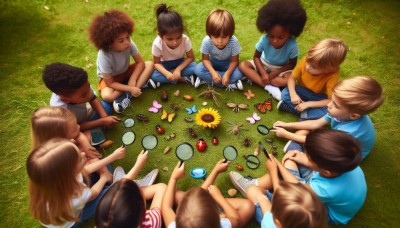
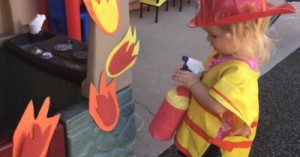



 Open ended questions cannot be responded to with one word answers such as yes or no. These types of questions enables a child to provide
Open ended questions cannot be responded to with one word answers such as yes or no. These types of questions enables a child to provide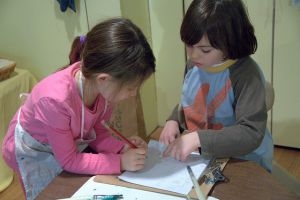 During your child’s preschool years, an important milestone begins to emerge. This is the development of pre-writing skills. Pre-writing skills are used to encourage, develop
During your child’s preschool years, an important milestone begins to emerge. This is the development of pre-writing skills. Pre-writing skills are used to encourage, develop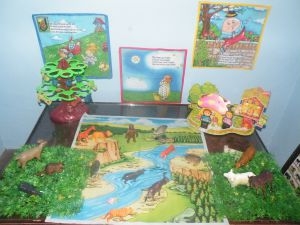 Open ended materials enables children to play freely. They are objects that have no rules to follow, use or function. Raw materials that can be
Open ended materials enables children to play freely. They are objects that have no rules to follow, use or function. Raw materials that can be An Acknowledgment of the Country is a way of showing respect for the Traditional Owners and can be given by both non-Indigenous people and Aboriginal
An Acknowledgment of the Country is a way of showing respect for the Traditional Owners and can be given by both non-Indigenous people and Aboriginal Language plays an important role in a child’s development. It enables a child to communicate effectively with their family, learn at school, socialize with friends,
Language plays an important role in a child’s development. It enables a child to communicate effectively with their family, learn at school, socialize with friends,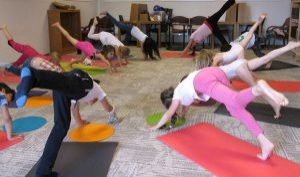 Like adults, children have to deal with their own stress in life. Moving house, starting a new school, preparing for a new sibling - these are
Like adults, children have to deal with their own stress in life. Moving house, starting a new school, preparing for a new sibling - these are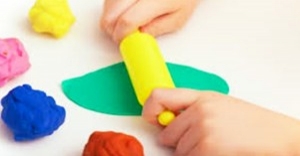 Playdough is such a versatile material. It provides numerous benefits to children as they manipulate it, it is safe and soothing and provides children with
Playdough is such a versatile material. It provides numerous benefits to children as they manipulate it, it is safe and soothing and provides children with Teaching children about sustainability enables them to appreciate and respect the natural environment. Early childhood services can provide meaningful hand on learning experiences in order
Teaching children about sustainability enables them to appreciate and respect the natural environment. Early childhood services can provide meaningful hand on learning experiences in order Recycling is an important concept that teaches children to care for the environment. It encourages children to be responsible and show a growing appreciating for
Recycling is an important concept that teaches children to care for the environment. It encourages children to be responsible and show a growing appreciating for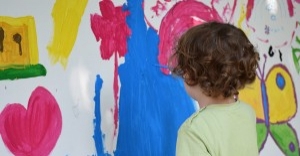 When children apply paint to paper, glue things together, or pound a lump of clay, they experiment with colour, shape design and texture.
When children apply paint to paper, glue things together, or pound a lump of clay, they experiment with colour, shape design and texture.

